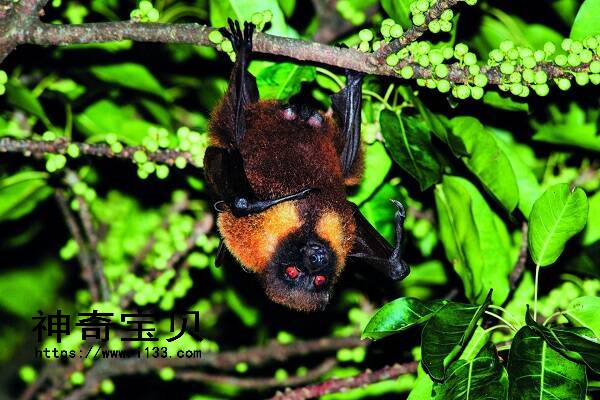Pteropus dasymallus
IUCN
LCBasic Information
Scientific classification
- name:Pteropus dasymallus
- Scientific Name:Pteropus dasymallus
- Outline:Chiroptera
- Family:Pterodactyla Pteropteridae Pteropterus
Vital signs
- length:About 20 cm
- Weight:350-550g
- lifetime:
Feature
With a dog-like head and large eyes, it is unique to Taiwan and is the only fruit eating bat in Taiwan's pterodactyl family.
Distribution and Habitat
Distribution from Kyushu Island, Kagoshima south of the small island group (such as Baodao, Nakanoshima, etc.), Ryukyu Islands, North and South Daito Island and Yaeyama Islands, through China's Taiwan Island (sporadic individuals), Kameyama Island and Green Island, south to the small island group under the northern Philippines (such as Bataan Island, etc.). There are five known subspecies of this species, including the Flying Fox Nagarabe (
Appearance
A big bat. Body length 200mm, forearm length 120-140mm. The hair on the head and abdomen is dark brown, and the neck has a circle of yellow or white hair. The head is larger than the insect-eating bat, the snout is prominent, the snout is like a dog, and the auricle is round and short; Both the first and second fingers have claws.
Details
The Ryukyu Flying Fox is the only fruit eating bat unique to Taiwan's pterodactyl species. It is a typical arboreal bat that relies on sight and smell to search for food. It feeds mainly on the fruits of the genus Ficus. It does not use ultrasound to locate, but uses sight and smell to find food, and lives in trees rather than dark caves. Due to its rarity, it is protected in Japan and Taiwan. This species is found in the Ryukyu Islands.

Chirochida is divided into microbatina and Macrobatina. Microbatina members, commonly known as bats, use echolocation and mainly prey on insects. There is only one family in the suborder, the Pteropteridae, which includes 173 species in 42 genera and do not use echolocation and mainly eat fruit, so they are called fruit bats. Among the 42 genera of the Flying Fox family, there is a single genus, consisting of 59 species, known as flying foxes or flying foxes.

To date, 11 species of fruit bats (4 of which belong to the genus Pteropus) have been recorded in China: the Brown, long-tailed, Ryukyu, Thai, Malay Great, Indian Great, canine, short-eared, ball, Great long-tongue, and ANSI long-tongue bats.
It is listed in the Red List of Biodiversity of China and assessed as endangered EN.








